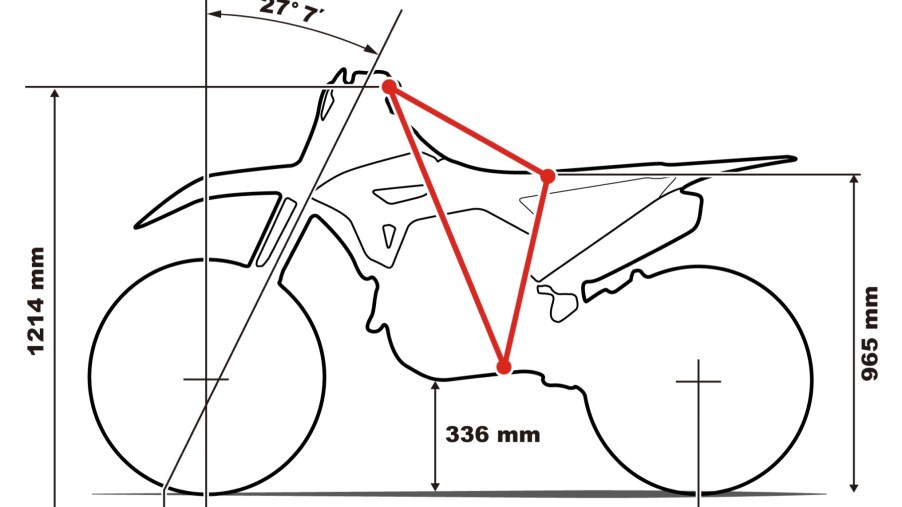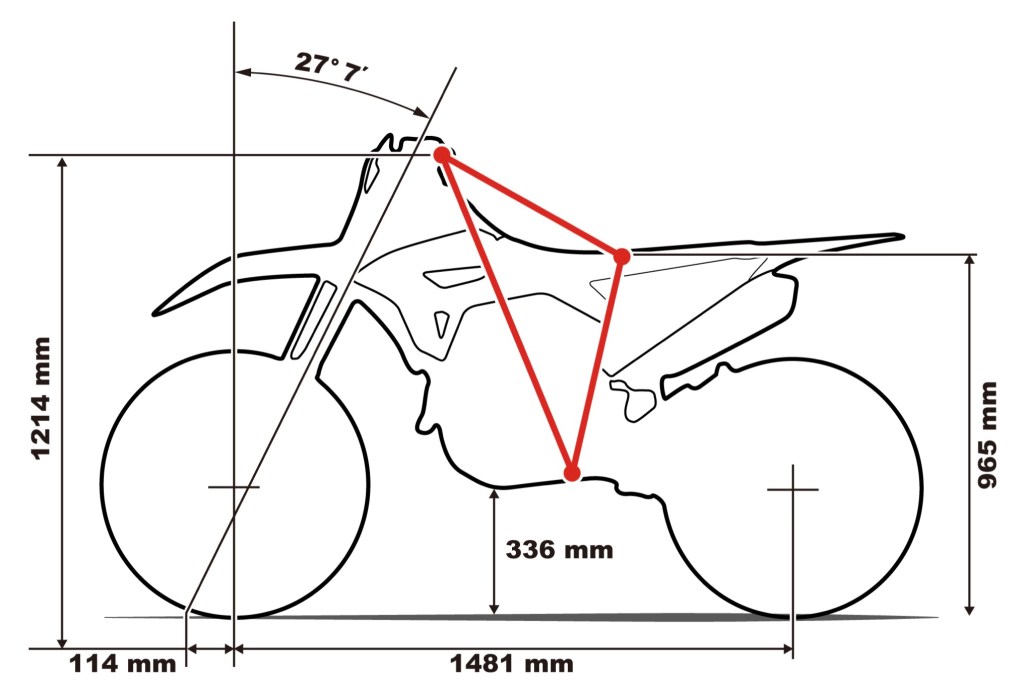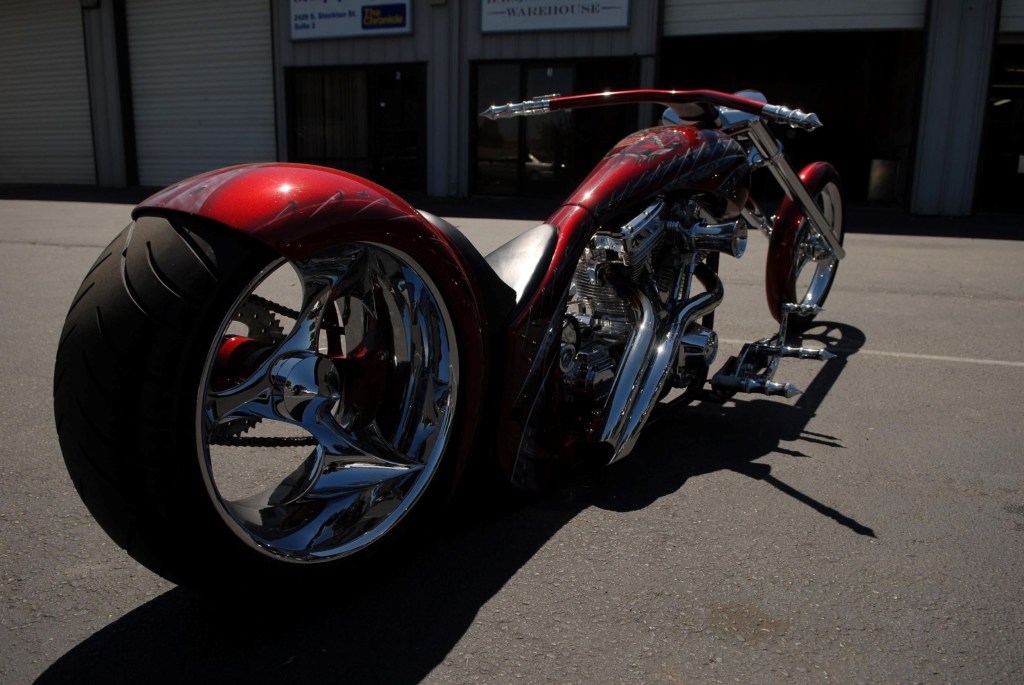
Rake? Trail? Motorcycle Geometry Matters More Than You Think
Many riders focus on things like horsepower, torque, curb weight, and seat height when browsing through bikes. However, these aren’t the only numbers that matter when picking out a motorcycle. Even if you don’t plan on exploring your limits on a racetrack, reading through your motorcycle’s geometry specs can help you understand how it might behave. And that means, for a start, understanding motorcycle rake and trail.
Motorcycle rake and trail are just some of the important geometry terms worth knowing

Before discussing motorcycle rake and trail, it’s important to understand what we mean by your bike’s geometry. The technical full term is ‘steering geometry,’ and it refers to all the factors that affect how your motorcycle handles and steers. These specs also impact weight distribution and steering effort, RevZilla notes, but we’ll get to that shortly.
Let’s start with motorcycle rake, aka caster. Imagine a line going straight down your bike’s headstock tube/steering head. Now picture that line intersecting a vertical line extended up from the front wheel axle. The angle between these two lines is your motorcycle rake, measured in degrees. It varies between motorcycle segments, but it’s usually between 20° and 40°, RevZilla says. However, it’s not unheard of for custom choppers to have something like 70° rakes.
Motorcycle trail—the suspension kind, not the riding route kind—is also measured at the front wheel. But while rake is a physical measurement, trail is more theoretical. Remember that imaginary line going down the headstock? Extend it until it hits the pavement. Then, measure the distance between that point and the point where the vertical axle line hits the pavement. This distance is your motorcycle trail, and it’s usually reported in inches and/or millimeters. Think of it as the distance between your motorcycle’s steering axis and its tire contact patch.
The motorcycle rake and trail are arguably the most-discussed geometry specs, but they’re not the only ones. Your bike’s wheelbase—the distance between the front and rear axles—is also part of its geometry. So is your offset, aka the steering or fork offset. It’s the distance between that imaginary headstock line and the imaginary line going down the center of your forks. And it, along with your motorcycle wheel and tire diameters, affects your trail, Cycle World reports.
That, in turn, means it affects how your bike handles and behaves.
Rake, trail, and all the other geometry specs affect your motorcycle’s handling
If you park a sportbike next to a cruiser, it’s obvious that these are two different machines with different riding styles in mind. And that wouldn’t change even if you gave the cruiser the sportbike’s powertrain. You have the different motorcycle geometry specs—rake, trail, and all—to thank for that.
A motorcycle with a steep (numerically low) rake angle, such as a Yamaha YZF-R7, usually also has a shorter trail than, say, an Indian Chief. And together with its shorter wheelbase, it means that the YZF-R7 turns more easily and sharply than the Chief and has a ‘livelier’ steering feel, RevZilla says. However, as rake and trail, and thus wheelbase, decrease, so does high-speed stability. And sportbikes with extremely-low rake angles often require steering dampers to prevent potentially fatal instability.
Speaking of stability, wheelbase length affects it and overall handling even if rake and trail don’t change. If you had two motorcycles with identical rake and trail specs but different wheelbase lengths, the longer one would be more stable but more difficult to lean and turn. It would also have a more rear-set weight distribution.
However, depending on what you plan on using your bike for, that might be a good thing.
Should you change your bike’s geometry?

Riders often upgrade their motorcycles’ suspensions with higher-spec internals and greater adjustability. But you don’t have to swap out your standard forks to tweak your bike’s handling: you can also change its geometry. For example, Roland Sands’ BMW R 18 Dragster has a stock front rake and trail—it just has a longer wheelbase. This puts more weight in the rear, which is exactly what a drag bike needs.
Changing your motorcycle’s rake and trail isn’t necessarily difficult, either. Changing the ride height by 4-5 mm, for instance, usually shrinks the trail by 1 mm, Cycle World says. Some bikes even come with adjustable fork triple clamps specifically so riders can change their offsets and thus their trails and, in turn, their rakes. And, as noted earlier, changing wheel and tire diameters also affects the geometry.
Plus, it’s worth keeping in mind that your bike’s rake and trail change slightly as you ride and the suspension reacts to the road surface. Some motorcycles, such as the Yamaha Ténéré 700, are even designed to take advantage of this. So, it’s not like changing the geometry is sacrilege.
However, playing around with your motorcycle’s rake, trail, or other geometry spec isn’t always a straightforward process, RideApart warns. Because these specs are interrelated, changing one changes another, and not always in the way that you want. So, if you’re thinking of doing it, talk to an expert first.
Still, if you find yourself gazing at spec sheets soon, know that these few numbers can make a big difference.
Follow more updates from MotorBiscuit on our Facebook page.


